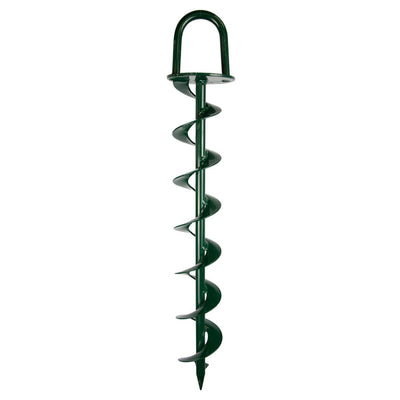Factors to Consider Before Purchasing a Durable Ground Anchor
Factors to Consider Before Purchasing a Durable Ground Anchor
Blog Article
Discover the Essential Uses Ground Support in Construction and Landscape Design
Ground anchors are indispensable elements in both building and landscape design, giving important security and assistance throughout various applications. From securing entrances and fencings to stabilizing short-term structures and enhancing the integrity of keeping walls, their convenience is notable. Moreover, their role in anchoring hefty tools and boosting soil retention highlights their importance in promoting safety and sustainability. The complete spectrum of their applications and advantages discloses complexities that merit further expedition, particularly in how they can change task outcomes in both domestic and business setups.
Safeguarding Fencings and Gates
Securing entrances and fences is a fundamental aspect of property delineation and safety and security in both domestic and business environments. Ground supports play an essential duty in making certain that these structures remain reliable and steady in time. By supplying a robust anchoring solution, ground anchors help protect against fencings from leaning or breaking down because of environmental factors such as wind, soil erosion, or ground activity.
In property settings, correctly anchored fencings not only enhance the aesthetic charm of a residential or commercial property however likewise give security and safety and security for animals and family members. In commercial settings, safe and secure fencing is critical for safeguarding possessions, delineating building limits, and making sure the security of customers and workers. Ground supports can be set up in different dirt types and conditions, making them versatile for various tasks.
Moreover, using ground anchors enables a much more permanent remedy contrasted to conventional methods, such as concrete grounds, which can be labor-intensive and time-consuming. Ground Anchor. This performance is specifically valuable in landscaping projects where timelines are vital. Generally, the integration of ground anchors into fencing and entrance installations dramatically contributes to their longevity, performance, and general effectiveness in securing buildings
Stabilizing Short-term Structures
While momentary structures are often made for short-term use, their stability is crucial for guaranteeing security and performance during their operational period. Ground supports function as an efficient solution for stabilizing these frameworks, which might consist of outdoors tents, stages, or modular structures. By securing these installments safely to the ground, ground anchors aid resist wind uplift and side forces that can compromise the honesty of the framework.

Additionally, the use of ground anchors allows for easy removal and repositioning of temporary structures, making them a perfect choice for building and construction websites or occasions that require versatility. On the whole, ground supports are an important tool in the safe and reliable management of short-lived frameworks, ensuring they execute accurately throughout their planned use.
Sustaining Retaining Walls
Using ground supports significantly boosts the architectural stability of keeping wall surfaces, which are crucial for handling soil disintegration and maintaining landscape stability. Retaining wall surfaces are subjected to side planet pressures, and without ample assistance, they can stop working, resulting in expensive fixings and possible damage to surrounding frameworks. Ground supports offer a reputable service by transferring the tons from the wall surface into the underlying dirt or rock, guaranteeing the wall surface continues to be upright and safe and secure.
These anchors are generally installed at an established angle and depth, permitting them to withstand the pressures applied by the maintained soil. By making use of this high-tensile strength materials and appropriate installment strategies, ground supports can significantly boost the wall's performance under various environmental problems, including heavy rainfall and seismic task.
On top of that, using ground anchors can minimize the requirement for considerable excavation and material use, advertising more sustainable construction methods. This strategy not just enhances the resilience of keeping wall surfaces but also reduces the total footprint of landscaping jobs. As a result, incorporating ground supports in keeping wall surface design is an important method for both construction specialists and landscape designers aiming to make certain long-lasting security and security.
Anchoring Heavy Equipment

Ground anchors give a trusted method to secure equipment, distributing pressures uniformly and strengthening stability. Using anchors allows drivers to work with confidence, particularly when lifting or moving heavy loads. Furthermore, in situations where equipment need to be positioned on unpredictable or soft soil, ground supports can be set up to boost grip and stop devices from sinking or ending up being immobilized.
Executing a systematic approach to anchoring heavy tools not only enhances operational efficiency yet additionally supports safety and security requirements on site. Normal evaluations and upkeep of anchoring systems are crucial to ensure their continued performance. By focusing on the anchoring of hefty devices, construction and landscape design specialists can develop much safer work settings, inevitably causing even more successful project end results.
Enhancing Dirt Retention

Soil erosion postures a significant challenge in both construction and landscaping tasks, making reliable soil retention strategies check out here crucial. Ground supports play a critical function in boosting dirt retention by supplying stability to structures and greenery, thus preventing soil variation brought on by water overflow and wind.
The installation of ground anchors entails installing steel rods or cords deep right into the dirt, which are then protected to keeping walls, terracing systems, or greenery. This anchoring mechanism not only maintains the dirt but additionally enhances the overall stability of landscaping functions. For example, in sloped areas, ground anchors can be made use of to support keeping walls, properly reducing the risk of landslides and dirt disintegration.
Additionally, these anchors assist in the establishment of deep-rooted plants, which additionally strengthen the dirt structure. By encouraging root development, ground anchors add to a robust community that naturally holds soil in area, lowering the requirement for man-made barriers or regular maintenance.
Verdict
To conclude, ground anchors offer several essential features in building and construction and landscape design. Their application in safeguarding fences and gateways, maintaining momentary structures, supporting retaining wall surfaces, securing heavy devices, and boosting dirt retention highlights their significance in promoting safety and security. By facilitating these essential tasks, ground supports add significantly to the total integrity of different projects, guaranteeing longevity and sustainability in both commercial and residential setups. Their flexibility makes them a crucial device in modern building and construction practices.
By supplying a robust anchoring service, ground anchors assist stop fences from leaning or breaking down due to environmental factors such as wind, dirt erosion, or ground movement. - Ground Anchor
By securing these setups safely to the ground, ground anchors help stand up to wind uplift and side forces that could endanger the integrity of the framework.
Making use of ground supports substantially enhances the architectural integrity of preserving walls, which are necessary for handling soil erosion and maintaining landscape stability. Ground anchors offer a dependable option by transferring the load from the wall surface right into the underlying dirt or rock, guaranteeing the wall surface remains upright and safe and secure.

Report this page